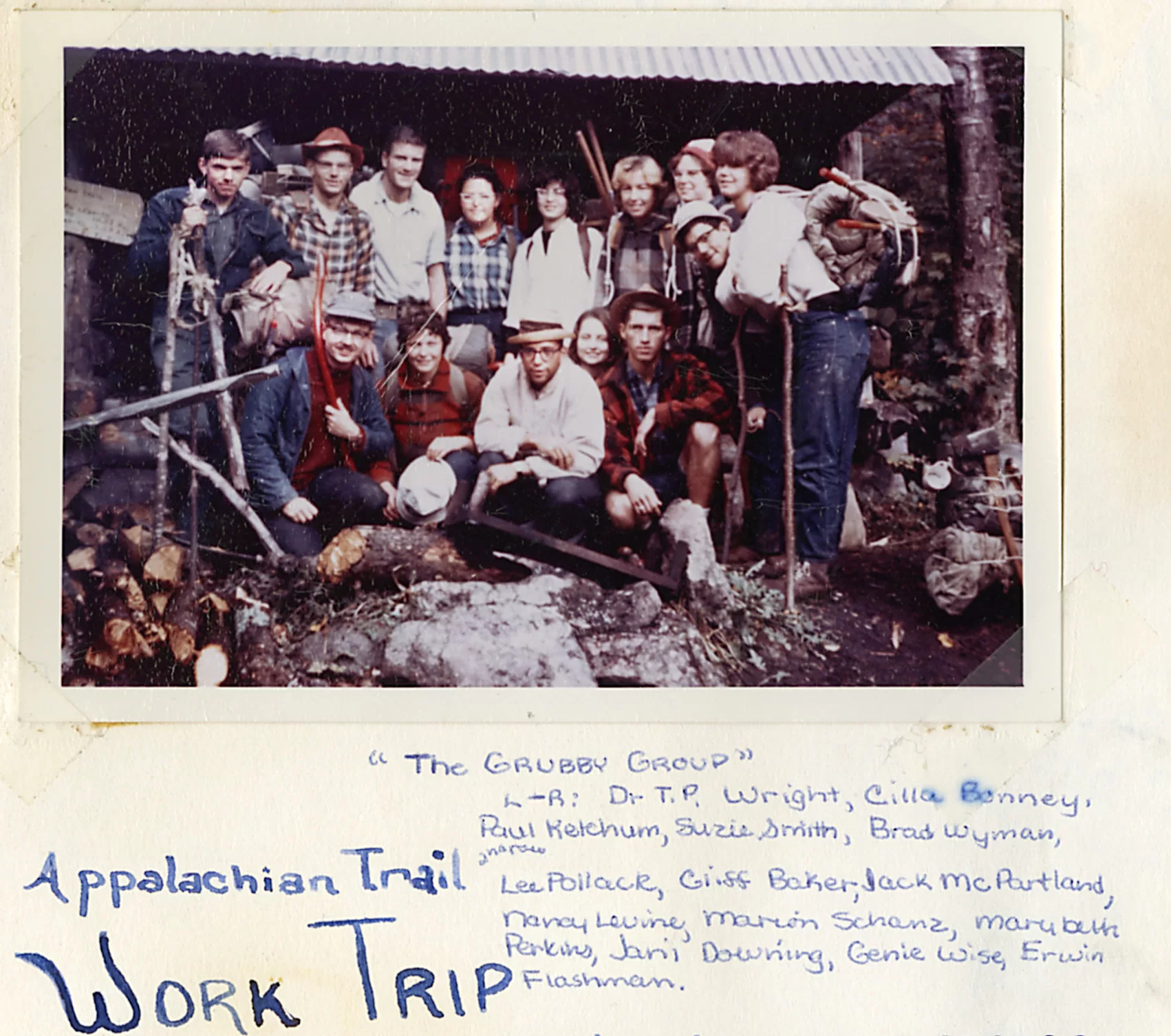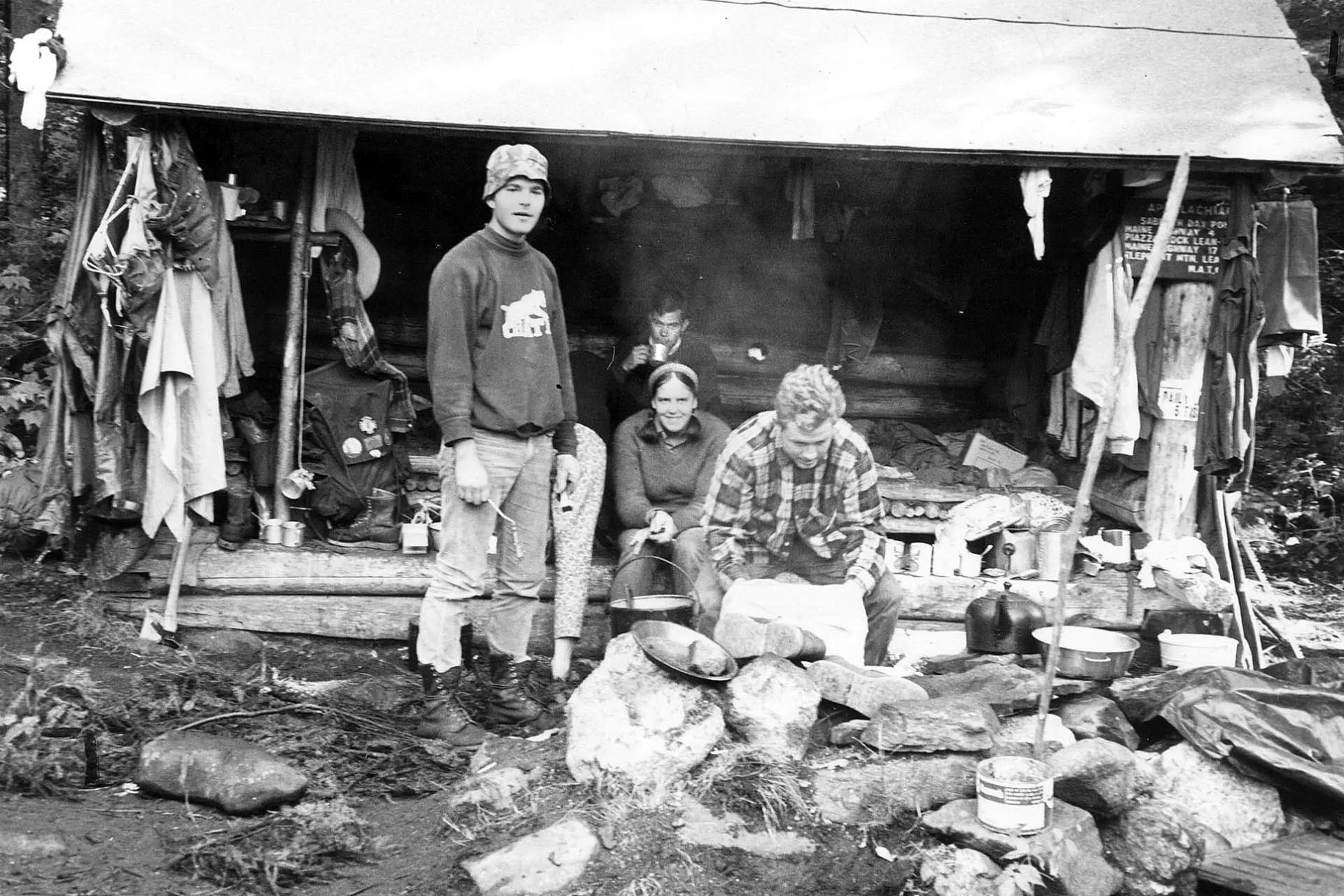During Orientation, a group of first-year Bates students paid a visit to a remote stretch of Maine wilderness.
In some ways, it was a return trip for Bates.
Starting in 1938, student members of the Bates Outing Club, working with the Maine Appalachian Trail Club, have regularly traveled to western Maine to help maintain a specific section of the Appalachian Trail.
The so-called Bates section extends from an old railroad line, known as the Bemis Track, to a permanent lean-to on Bemis Mountain, a stretch of about 3.7 miles. (The entire trail in Maine is 282 miles.)
In 1940, The Bates Student described Bates students helping to “clear the trails, blaze trees, replace signs, and repair lean-tos and foot bridges.” Eighty-three years later, the volunteer work remains the same and remains important, says Sander Katz ’25 of Wilmington, Del.
Katz and fellow junior Fiona Wilson of Barnstead, N.H., led seven first-year students to do trail maintenance on the Bates section around Bemis Mountain and the nearby Bemis lean-to. The trip was one of 57 student-led trips this year sponsored by the Annual Entering Student Orientation Program (AESOP).

Katz explains that hikers sometimes “take for granted that the trails we hike on will be in working order, and don’t think about the work that goes into maintaining them. It takes a lot of time and effort to clear the trail as well as bring the gear in to maintain it.”
During the AESOP trip, the Bates group met with Ron Tebbetts, who is one of six district managers for the Maine Appalachian Trail Club. “I really enjoyed my time with the students,” Tebbetts said. “They treated this old man very well!”
From Georgia to Maine, maintenance of the Appalachian Trail depends on strong collaboration among various organizations, led by the non-profit Appalachian Trail Conservancy, and on the work of volunteers.
“Without volunteers, the trail wouldn’t exist,” Tebbetts said. “Bates’ association with the MATC and trail maintenance started many years ago and the MATC hopes that it continues for many more.”
The work goes beyond trail aesthetics. Trails need to be marked so hikers don’t get lost. Bridges and boardwalks need to be in good shape so hikers don’t trip or fall. Shelters and campsites need to be clean and safe.
“Volunteers maintain signage, paint blazes, and clear the treadway of blowdowns and vegetative ingrowth,” Tebbetts said. “As a through-hiker, I really appreciated having a clear trail to hike — not having to maneuver over, under or through blowdowns, which takes a lot of unnecessary effort and energy.”
The arrangement for Bates to help with trail maintenance was announced in the Student in December 1937. Myron Avery, a legendary figure in Appalachian Trail history who chaired what is now the Appalachian Trail Conservancy, said the new volunteers would “aid the problem of maintaining the entire trail in Maine.” (Originally, the “Bates section” was nearly 40 miles, not 3.7 miles as it is now, and maintenance of the whole length was a four-year process, “by senior year, a student was likely to have experienced the whole thing,” recalls retired BOC adviser Judy Marden ’66.)

Starting in 1938, the Bates Outing Club did its work under the direction of another important figure in the history of the AT in Maine, William H. Sawyer Jr. of the Class of 1913, a longtime Bates biology professor and Outing Club adviser. Today, one of the Outing Club’s two annual student leadership prizes is named for Sawyer, the other for Harold Norris Goodspeed, Class of 1940.
(Side note: Some historical accounts credit Sawyer and students, in 1934, with scouting and blazing the final section of the trail in Maine. Notwithstanding Sawyer’s contributions to the Outing Club and the AT, that account is disputed.)
This film clip, from around 1939, shows Sawyer (in the Panama hat leading the group) and students doing maintenance work on the Appalachian Trail.
After viewing the 1939 video, Katz had a couple reactions. One, gear has come a long way. “Our backpacks are a lot more advanced than the ones that they had,” he says. “We now have very nice sleeping bags and sleeping pads and a shelter pre-prepared for us.”
What hasn’t changed all that much are tools. “We used saws, loppers, and pruners.”
The 1939 clip shows a frying pan filled with bacon. During the 2023 trip, dehydrated meals were used . The clip of the back then shows the students applying old-school bug repellant — nasty stuff made from pine tar — while the current students used DEET-based repellent.
During their stay, the Bates crew met a section hiker (someone who completes the AT in a series of multi-day trips over a period of time) at the Bemis lean-to. He told the Bates group that he was in charge of maintaining a trail system back in Louisiana.
“He said that we now owned that section of trail that we maintained. When we come back someday, we could say we took care of this trail.”
Additional reporting by Hannah Kothari ’26


